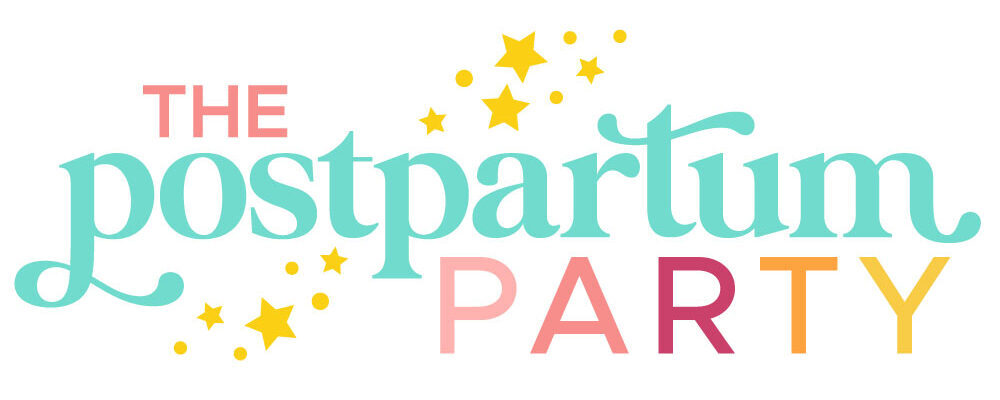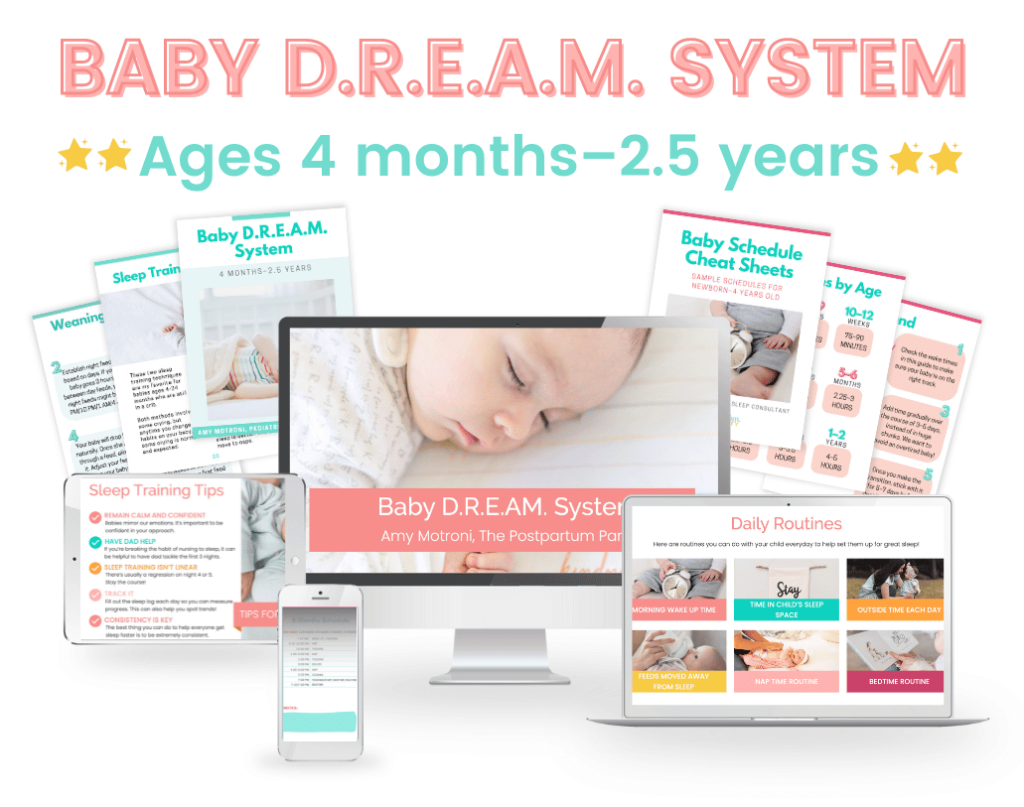Looking for an ideal 14 month old sleep schedule? Here’s all the information you need to set your toddler up for sleep success.

Your little baby isn’t such a baby anymore!
At 14 months of age, your little one is growing up and hitting so many developmental milestones:
- You’ve celebrated their first birthday
- They’ve likely said their first word and are probably saying multiple words
- They’ve probably even taken their first steps (or they’re getting very close)!
All that change can disturb their sleep and cause you to question their sleep schedule.
I know you’ve heard me say that every baby is different, and the same goes for toddlers.
That’s especially true around this 14 month age, where there’s potentially a big shift in your little one’s nap schedule.
The tricky part about that transition is that it isn’t cookie-cutter. When families ask me what the best 14 month old sleep schedule is, I have to give them the least-favorite answer of parents everywhere:
It depends!
Your 14 month old’s sleep schedule depends on their physical development, their personality, and whether they’re taking one or two naps each day.
Let’s dive into what you need to know to set your toddler up to be emotionally regulated and well-rested at 14 months old.
To help you better, start by downloading my free baby sleep calculator to see when nap time and bed time should be based on your baby’s age. Click here to grab that, it’ll be super helpful.
How Much Sleep Does a 14 Month Old Need?
Although your 14 month old isn’t sleeping nearly as much as they used to, they still might need more sleep than you think.
Busy toddler bodies need to rest in order to keep up with all of the action.
I recommend that your 14 month old get a total of 13 to 15 hours of total sleep over a 24-hour period. Typically, this breaks down to around 11 to 12 hours of sleep at night, and 2 to 3 hours of daytime sleep during nap(s).
At this age, I typically see young toddlers being capable of being awake for 4 to 5.5 hours at a time.
Some babies may still need to be on two daytime naps at 14 months old and some babies may be ready to make the transition to one nap.
The wildcard around this age is that some toddlers are capable of being super marathon nappers (taking one nap that lasts many hours!), while others tend to sprinkle their times of rest throughout the day.
Keep reading to see what your 14 month old may need when it comes to sleep.
How Many Naps Should A 14 Month Old Take?
There can be some variation in sleep needs for a 14 month old.
At 14 months, your toddler might still be taking two naps, or they may have already transitioned to just one nap.
This transition from two naps to one will usually happen sometime between the 13 and 18 month mark.
Some families experience this nap transition right after making it through the 12-month sleep regression. Others find that their one year old’s schedule stabilizes for a few months before things get shaken up again.
On average, though, I see many toddlers ready to move to a 1-nap schedule around 14 months.
And this transition can be a doozy!
Switching to just one daily nap means you now have to stretch your baby’s awake time to about 5 hours.
That’s a big change, especially when they’ve been accustomed to wake windows that are more like 3.5 hours long.
Is 14 Months Too Early for One Nap?
This age isn’t too early to transition to one nap, but I would caution you not to force it. Make sure your baby is showing signs of readiness before your start the transition process.
When they’re ready to switch to a one-nap schedule, your toddler will start fighting sleep. They’ll also start showing other signs that they’re ready to transition.
If you’re not sure what signs to look for, I’ve listed some below. Many of these are similar signs that your baby would have shown for the 3 to 2 nap transition.
Signs I usually see when your baby is ready to make the 2 to 1 nap transition:
- Your one year old stops falling asleep during their first nap time of the day. Instead, they choose to stay alert and play in their crib or fuss.
- It’s taking longer for your child to fall asleep for their morning nap. (Or they consistently skip this nap for multiple days in a row.)
- They are skipping their afternoon nap, or their second nap is consistently shortened over the span of multiple days.
- Your baby used to take consistent naps that were each longer than an hour. Now, they’re taking short naps, only napping for about 30 minutes at a time.
- The second nap in the afternoon appears to be interfering with bedtime. You’ve been having to push bedtime back because your toddler just isn’t tired enough.
- Your toddler is waking up too early the in morning. Maybe they used to sleep until 7 a.m. and are suddenly waking at 6 a.m. each day.
- Bedtime tantrums are becoming the norm. Your toddler is either playing instead of falling asleep or throwing a fit when you try to leave them in their room at bed time.
If you see these signs over the course of several days, it’s likely time to drop to one nap.
More Things to Keep In Mind About the One-Nap Transition
This is a tricky sleep schedule transition, so I encourage you to be patient. The changes and tweaks you make aren’t going to stick right away.
In fact, as you start to make the transition to one nap, you can expect to run into some hiccups.
For example, you might find that your baby’s one precious nap is way too short for your liking. Their nap might be around an hour long, instead of the full nap you know their tired toddler body needs!
Another common pitfall during this transition is false starts. Just when you think they’re down for the count, they end up waking up after less than 60 minutes.
As frustrating as these things may be, I encourage you to stick with it.
There could be days where you might have to fit in a catnap before bedtime, and that’s totally normal. During the transition there may be some days where your toddler needs two naps and other days where one nap is fine.
Try not to be too rigid during the transition and remember that flexibility is part of it.
It can take up to six weeks for your toddler to get fully on board with the one-nap schedule.
Be patient, I promise you’ll get there!
What Time Should a 14 Month Old Go To Bed?
An ideal bedtime for your 14 month old is between 7 and 8 pm.
At this age, toddlers need between 11 to 12 hours of sleep at night.
Your 14 month old’s bedtime will depend on whether or not they have made the transition to one nap.
If your little one is still sticking to a two-nap schedule for now, you can anticipate that bedtime will probably be between 12-13 hours after they’ve woken up for the day.
It might take a little extra time after the second nap of the day to build up enough sleep pressure for bedtime.
However, if you’ve made the transition to just one nap, you’ll find that your active toddler is very ready for bed by the end of the day. With a one-nap schedule, consider putting your 14 month old to bed right around 12 hours after they wake up for the day.
If the transition to one nap happened recently, you might even push bedtime up by 30-60 minutes, especially if their only nap of the day was on the shorter side and you notice signs that your toddler is overtired.
So for a 14 month old who is on a two-nap schedule, and who wakes up at 7:00 am, you can expect bedtime to fall somewhere between 7:00-8:00 pm.
For a 14 month old who is on a one-nap schedule, and who wakes up at 7:00 am, you might expect bedtime to be closer to 6:30-7:00 pm.
Make sure to keep a consistent bedtime routine, even if the timing varies during the transition.
What’s the Ideal Schedule for a 14 Month Old?
The ideal 14 month old sleep schedule will include enough time to get wiggles out and work on mobility.
Be sure to have your baby’s wake windows between 3.5 to 5 hours long. This allows plenty of time to fit in a lot of activity. It will help tire out their bodies and build up enough sleep pressure to sleep through the night.
Remember, your toddler’s awake window begins when you get them out of their crib. It ends when you set them down to sleep.
14 Month Old Sample Schedule (On Two Naps)
Here’s an example of a 14 month old daily schedule on two naps. It includes enough awake time for your little one to build up sleep pressure and sleep through the night. Make sure to fit in feedings and solid foods as needed. Some parents are still nursing, while some have moved to cow’s milk at this age.
7:00 a.m. — Wake up
10:30-11:30 a.m. — Nap
3:00-4:00 p.m. — Nap
7:00 p.m. — Start Bedtime Routine
7:30/8:00 p.m. — Bedtime
14 Month Old Sample Schedule (On One Nap)
7:00 a.m. — Wake up
12:00–2:00/2:30 pm: Nap
6:30 pm: Start baby’s bedtime routine
7:00/7:30 pm: Bedtime
Get Better Sleep with The Baby D.R.E.A.M. System
If you want someone to walk you through the process of sleep training, let me help. The Baby D.R.E.A.M. System is for babies 4 months through 2.5 years old. I’ll walk you through how to establish daily routines, sleep schedules, and sleep training techniques to help you break the sleep associations you no longer find beneficial! Check it out here.
14 Month Old Sleep Schedule Frequently Asked Questions
Once your 14 month old gets on a one-nap schedule, congrats! Their daily routine is going to stay the same for a while now.
But even though you’re approaching a time of consistency in your toddler’s sleep schedule, this age is not without its own challenges.
Here are some of the most commonly asked questions when it comes to 14 month olds and sleep.
Q: Why is my 14 month old refusing to nap?
Refusing to nap, especially during the first nap of the day, is typically a sign that you need to consider dropping to one nap.
When your toddler is fighting nap time, is might also be that they haven’t had enough awake time to build up enough sleep pressure.
Finally, your toddler refusing to nap could just be due to some cool new skills they are learning.
Q: How can I create a sleep-friendly environment for my 14-month-old?
Create a sleep-friendly environment in your child’s bedroom by using a white noise sound machine for naps and bedtime. You can also use blackout curtains to make the room dark, which helps promote sleep.
Q: Is it normal for a 14-month-old to still wake up during the night?
Babies are capable of sleeping all night without night feeds at this age, but that doesn’t mean they have the skills to do so.
So while it may be common and normal for a 14 month old to wake up in the middle of the night, that doesn’t mean they can’t sleep all night.
Q: Is there a 14 month old sleep regression?
Your child can definitely experience a sleep regression around 14 months old.
Whenever your little one experiences an increase in cognitive or physical development, they’re at risk of taking a step back with sleep progress. It natural—don’t stress!
Additionally, your 14 month old may be having some separation anxiety.
As with any sleep regression, my biggest advice is to remain consistent to your 14 month old sleep schedule, and practice patience. You also might need to re-up on your favorite toddler sleep training to help your child through this regression.
Also, don’t forget to build in lots of time during the day for your 14 month old to practice the skills they’re working on. This will help them get energy out during the day and hopefully sleep at bed and nap time.
Q: Is it normal for a 14-month-old to experience separation anxiety at bedtime?
Yes, absolutely. Your little one may be at the peak of separation anxiety and it can be hard when you leave! Make sure to spend a lot of time during the day in their nursery, so they are comfortable sleeping in it all night.
At this age, it can also be helpful to introduce a lovey or stuffed animal. Your baby can sleep with a blanket now, so providing them with a small lightweight blanket that smells like you might also help.
Q: Are there any specific sleep training methods or approaches recommended for a 14-month-old?
At 14 months, the two sleep training methods I use the most are the Chair Method and the 3-Minute Drill. The Ferber Method is also an option at 14 months.
I go over my two favorite methods as well as how to do them in the Baby D.R.E.A.M. System.
Q: Should I still be using a crib or transitioning to a toddler bed at this age?
Keep your young toddler in a crib as close to age 3 if possible. 14 month olds have a hard time understanding boundaries and it’s too early to transition to a toddler bed.
Q: Is it okay for my 14-month-old to still use a pacifier or rely on certain sleep associations?
If your 14 month old is still using a pacifier and it’s not disrupting their sleep, then it’s fine to keep it. It’s only time to take away the pacifier once it starts interfering with your baby’s sleep.
Q: What are some 14 month old milestones?
This is an exciting time in toddlerhood, as your baby makes major (and literal) strides in their growth.
There are so many milestones they’re working on.
Your little one is probably working on being fully mobile and mastering their walk, which is super exciting!
They are also getting much more in to interactive play. They’ll begin to flex those new problem solving skills and improved coordination while they’re in play mode.
Your toddler is also starting to understand so much more of what you’re saying and asking them. While they might not be able to contribute much to the conversation yet, their little brains are working overtime to catalog all of these new words.
All of that growth is super exciting. But just like with any other major physical or cognitive developments throughout your baby’s life so far, these milestones can foster just the right conditions for a sleep regression.
After all, practicing these new skills is so much more interesting than sleeping!
- Understanding Your Baby’s Sleep Cues - April 29, 2024
- Practical Tips if your Toddler is Going Through A 3-Year Old Sleep Regression - April 26, 2024
- Baby Led Weaning vs Purees — Which Should I Choose? - April 25, 2024







